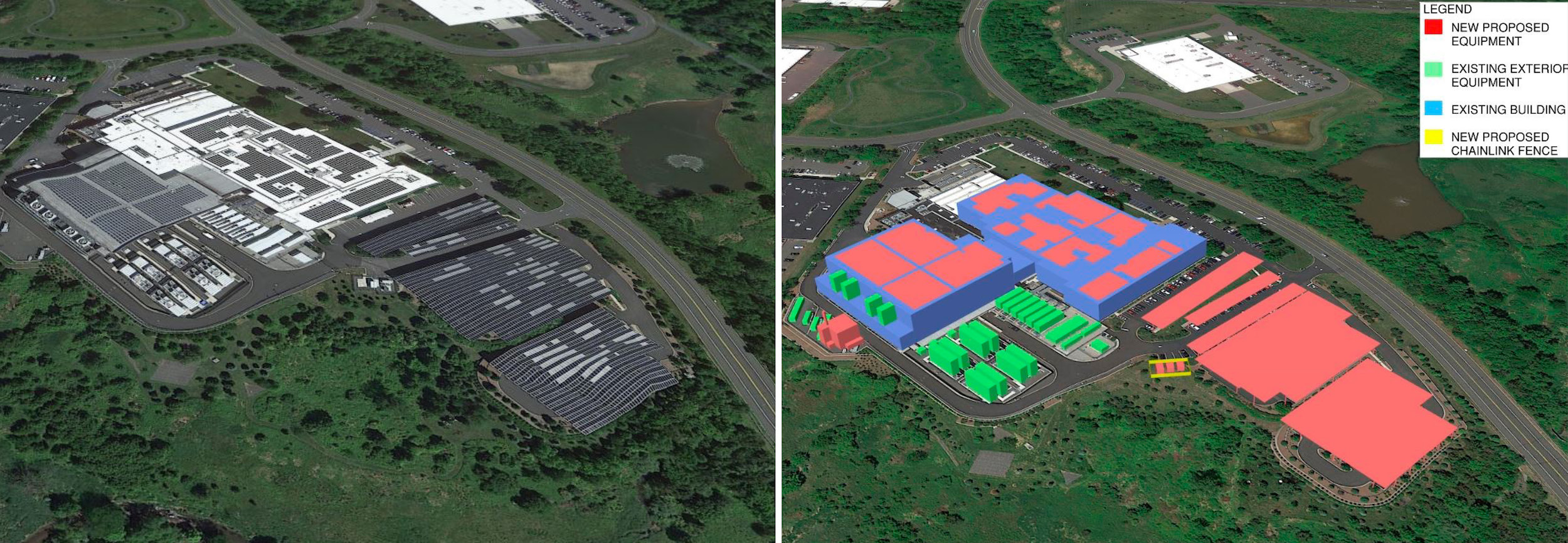Cogeneration is more efficient than traditional power generation, reduces carbon emissions, has high returns on the initial investment, improves reliability, and offers a platform for additional renewable resources and energy storage for a facility. But what is cogeneration? And is it suitable for all facilities?
Cogeneration—or combined heat and power (CHP)—creates multiple forms of useful energy from a sole source. Combustion engines use natural gas to power a generator and create electricity. In a standard generation system, the waste heat from producing electricity is released into the atmosphere. A CHP system captures and converts the exhaust to produce even more energy in the form of heating, cooling, or hot water.
A cogeneration system converts 100 units of fuel into 35 units of electricity and 50 units of heat, while losing only 15 units of energy. Comparatively, a traditional generation method requires 165 units of fuel to produce the same amount of electricity, and additional sources are needed for HVAC purposes.
The technology in CHP uses waste heat recovery devices, such as waste heat boilers, to create thermal energy or additional electric power from the exhaust. This system significantly improves energy efficiency by using less fuel per unit of energy, which dramatically reduces CO2 emissions and other pollutants. Specifically, a cogeneration system’s carbon dioxide emission factor is 48.9% lower than conventional systems.
A cogeneration system is more reliable as it operates in parallel with utility sources, using a power grid to supplement power generation. In the case of a grid blackout, or for storm avoidance measures, a cogeneration plant can function independently, allowing the facility’s operations to continue.
In many instances, CHP systems provide quick return on the initial investment. Cost savings can be significant by leveraging the various energy sources against one another—namely, natural gas against electricity. Further savings result from the decreased cost of producing heating or cooling.
Is cogeneration a suitable method for all facilities?
Cogeneration is most appropriate for industries that operate on a large campus, such as healthcare facilities or university and college campuses. These facilities operate on a near continuous basis and have large electricity demands, resulting in significant levels of waste heat that may be recycled.
Healthcare facilities are a particularly distinguished candidate for cogeneration; the transition would benefit the environment and healthcare facilities with up to 40% savings in energy costs and more reliable power sources. Healthcare, including hospitals, medical facilities, and medical supply chains, accounts for 4.4% of global emissions and almost 8% of US emissions.
A facility’s geographic location is also an important consideration. Depending on weather patterns and climate, some areas may require more thermal energy. Facilities operating in an environment that requires a thermal load—whether heating or cooling—on a near-continuous basis will have increased benefits from cogeneration. For example, in the Northeast, space heating, summertime reheat, and process needs can be found year-long, so CHP may have dramatic positive economic benefits by eliminating the additional operating costs for these systems.
Page collaborated with Renova Energy & Infrastructure to compile a report for the Verizon Wireless Equipment Center, investigating opportunities for a local microgrid installation—containing CHP and battery storage—at the Network Equipment Center in New Jersey. The study proposed a CHP system that utilizes a combustion engine-generator (CEG) to make electricity. The generator includes an exhaust and jacket-cooling system where waste heat is captured via heat exchangers to create hot and cooled water.
Page recommended a single, nominal 4050 kW engine for this site with the goal to optimize the cost of delivering electricity and chilled water to the large facility. The team chose the size and composition of the system based on cost-effectiveness, available natural gas pressure requirements, and redundancy and reliability needs.
When cogeneration is applied in appropriate industries and geographic locations, it can provide significant advantages from financial savings to the reduction of carbon emissions. Page makes deliberate recommendations in accordance with its clients’ facility needs, geographic location, and size.
More from Author
Page | Sep 18, 2024
Modernizing dental schools: The intersection of design and education
Page's John Smith and Jennifer Amster share the how firm's approach to dental education facilities builds on the success of evidence-based design techniques pioneered in the healthcare built environment.
Page | Jun 10, 2024
5 hidden benefits of mass timber design
Mass timber is a materials and design approach that holds immense potential to transform the future of the commercial building industry, as well as our environment.
Page | May 2, 2024
Emerging considerations in inclusive design
Design elements that consider a diverse population of users make lives better. When it comes to wayfinding, some factors will remain consistent—including accessibility and legibility.
Page | Feb 21, 2024
University design to help meet the demand for health professionals
Virginia Commonwealth University is a Page client, and the Dean of the College of Health Professions took time to talk about a pressing healthcare industry need that schools—and architects—can help address.
Page | Nov 22, 2023
How is artificial intelligence impacting data center design?
As AI is reshaping how we interact with machines and the world around us, the design of data centers needs to adapt to this fast-changing landscape. So, Page pairs expert thinking with high-performing solutions to meet the needs of rapidly advancing technologies.
Page | Sep 5, 2023
Optimizing interior design for human health
Page Southerland Page demonstrates how interior design influences our mood, mental health, and physical comfort.
Page | Aug 4, 2023
Anatomy of a model apartment
Page’s interior designers curate model units that harmoniously cater to a range of users, allowing visitors to see a once-empty room as a place of respite and a home.
Page | Jun 14, 2023
Designing higher education facilities without knowing the end users
A team of architects with Page offers five important factors to consider when designing spaces for multiple—and potentially changing—stakeholders.














